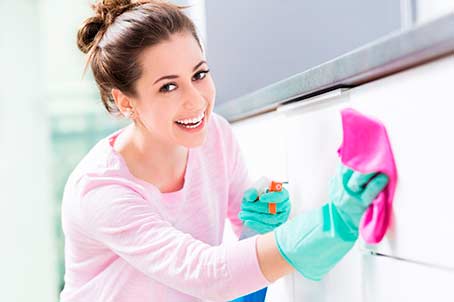
Indeed, knowing how to organize the house It's good, but figuring out where to start can be frustrating. That's because there are so many environments that we end up getting a little lost.
If you want to know how to organize the house, continue reading this article we have prepared for you!
9 tips on how to organize your home that can help you!
Know the active and passive areas
Active areas are the places in the house where you and your family spend every day (sometimes even several times a day), such as the entrance, the TV room and the bedrooms, mainly.
Passive areas are spaces in the home that are used less frequently, such as the guest room, garage or basement, very high or very low shelves, and deep corners of closets.
A common mistake made when trying to organize things is filling key access points with items that are not frequently needed.
For example, don't leave emergency candles in the top kitchen drawer if you really only need them once in a while!
Also think about the aesthetics of your home.
Every home has a variety of open and closed cabinets for storing things. However, whatever you decide to put on the shelves should be visually pleasing.
In the living room, bookshelves are a good place for books (organized by color if you're feeling creative) and pretty items, certainly not for old board games or a bunch of video games.
Likewise, in the kitchen, clear glassware or favorite cups should be placed on exposed shelves, not plastic food containers.
Make it easier to find objects
Clear jars are perfect for knowing the contents at a glance, and open baskets can collect loose items, allowing you to look inside.
If you use containers that aren't transparent, be sure to label them clearly – you can even attach a photograph of their contents (instant cameras are ideal for this).
Store more easily
This is the most important thing for kids’ toys, but we can all benefit from this rule. When it comes to taking something out, it’s fine – no matter where it is – but when it comes to putting it away, we’re all a little lazy.
To increase the likelihood of things returning to their proper place, use easy-to-reach boxes, bins, and baskets. This means simple storage systems and wall hooks for frequently used items.
Grouping by function
In this regard, the first aid kit comes to mind: when we need a bandage, we may also need an antibiotic ointment, perhaps a pair of tweezers to remove a splinter, and some gauze. In short, in a first aid kit, everything you need to heal a wound is in one place.
When organizing your things, keep this example in mind and group everything you need to do a task in the same place.
You can create a box for medicine, another for office supplies, another for cookie cutters and decorations, etc. Labeled shoebox-sized containers are great for collecting small items.
Create a “public transport station”
We all have a certain number of objects in constant transit: books borrowed from the library that need to be returned, your bag and house keys, your dog's collar, the plate a friend gave you after the last party, among many others.
Instead of piling them up, create a dedicated space that allows you to manage them and keep them organized. If you have space in your hallway, this is the most logical place to organize them: a few baskets on a shelf and some wall hooks should do the trick.
Divide the inside of the drawers
Drawers invite accumulation. Whenever you need to store small items in a drawer, use special dividers.
In fact, these dividers are perfect for you to understand how to organize the house. It is through them that you can keep all your drawers organized and all items in their correct places.
There are several options available online, ranging from different colors and shapes. You can choose the ones that best suit your home.
Choose the right container
It can be heartbreaking to discover that some of your favorite items—old family photographs, grandma's wedding dress—have been ruined because they were stored improperly.
Therefore, take preventive measures by choosing the appropriate container. Paper photographs and memories should be stored in acid-free albums or containers, fabrics in special boxes or breathable cases.
Store heavy items below
You should never balance on a ladder when trying to lift anything heavy. Keep heavy items at or below waist height, including boxes, kitchen equipment (cast iron pans and mixers weigh a ton!), and anything else that requires some effort to lift.
This will certainly make your life much easier, and it is also an excellent way to prevent possible accidents.
Take care of the laundry
This is certainly an area that we often forget.
The laundry room includes a washing machine, a sink and cabinets to store various objects.
For better organization, cleaning products should be placed under the sink to prevent them from mixing with other products. The trash can should also be installed in this area. Above all, do not wait until it is overflowing before emptying it.

